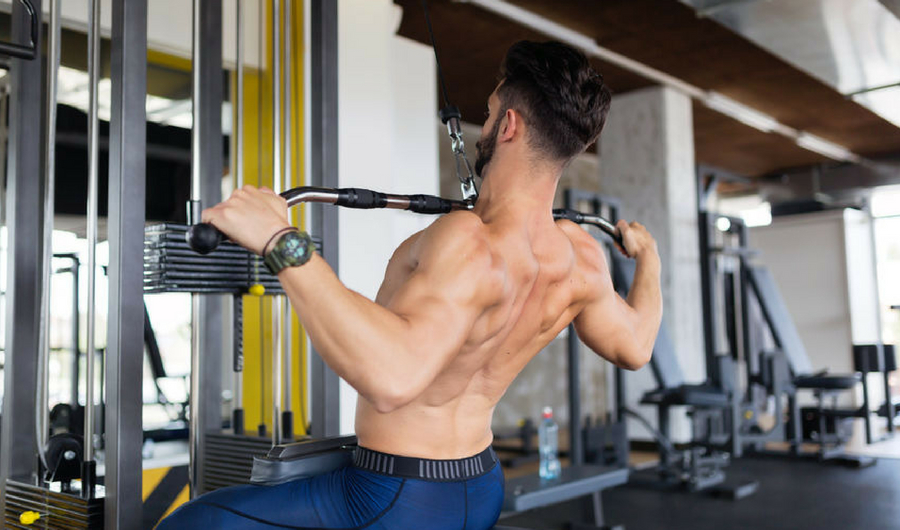Article written by Community Fitness Center Manager, Tim Clark
Sometimes weight room tradition handed down from generation to generation becomes so ingrained it goes beyond ‘bro-science’ and becomes unquestioned gospel truth.
For example: walk into any gym and ask any of the resident gym rats what the best exercise is for developing a big ‘V’ shaped back. I'm guessing most of the answers will be a wide grip lat pulldown or pull up either in front of the head or pulling down behind the head.
But there are so many variations — which one is the most effective?
You’ll find debate on this issue among fitness professionals. Let’s put playground rumors and squabbling aside and turn to real science on this issue — white lab coat, big-brain, Bill Nye kind of science.
Pronated vs. Supinated Grip
Let’s start by looking at hand orientation on the bar — pronated (palm of hand facing away from you) and supinated (palm of hand facing you). In 2010, an electromyographic (EMG) study was conducted that compared four variations of lat pulldowns:
- Wide pronated grip lat pulldown, (i.e. palm of hand facing away from you)
- Wide supinated grip lat pulldown, (i.e. palm of hand facing you)
- Narrow pronated lat pulldown, (i.e. palm of hand facing away from you)
- Narrow supinated lat pulldown, (i.e. palm of hand facing you)
The study used 12 test subjects performing all four variations pulling from in front of the head with a predetermined load that was 70% of their one repetition max. Muscular response from the latissimus dorsi, middle trapezius and biceps brachii muscle groups were measured during all four lat pulldown variations.
Does your hand position make a difference?
No matter which grip width a pronated hand position will create more muscle activity in the lats than a supinated grip will. According to this study, the grip orientation had no marked influence on either the middle trapezius or the biceps brachii.
Wide Grip vs. Narrow Grip
Rumor has it that a wider grip will stimulate more muscular growth of the latissimus dorsi than a narrow grip will. Have you heard this a time or two? Is there any scientific merit to that claim? In 2014, a study was conducted comparing the EMG activity of a lat pull down with a pronated grip using three different grip widths based off of the test subjects biacromial measurements or shoulder width for those of us without a Ph.D. and a normal brain capacity.
Fifteen test subjects performed a six repetition max effort with a narrow, medium and wide grips recording EMG data from the latissimus dorsi, trapezius, infraspinatus and biceps brachii for all three hand positions.
Which grip width is the best?
The study showed that it appears there is a minor advantage to using a medium grip over narrow and wide grips.
Pulling Down In Front of the Head vs. Behind the Head
In 2009, an EMG study was conducted to determine the muscular activity difference between a lat pulldown in front of the head versus behind the head as well as lat pulldowns using a ‘V’ bar. The study used 24 test subjects performing five repetitions at 80% of their one rep max. EMG data was recorded from the pectoralis major, posterior deltoid and biceps brachii as well as the latissimus dorsi muscle groups.
Should you pull down in front or behind your head?
There was no difference in muscular activity for the latissimus dorsi when comparing the three variations. The study concluded that when the primary objective of a lat pulldown is considered the front of the head is a better choice than behind the head.
Keep in mind, there are several biomechanical issues associated with performing lat pulldowns behind the head:
- In order to perform a lat pulldown behind the head, the shoulder joint is forced into extreme external rotation and horizontal abduction. This increases the risk of injury to the shoulder. If done regularly, you run the risk of developing anterior instability of the joint which is often associated with soft tissue damage to cartilage, ligaments and the muscles of the rotator cuff. Basically you are potentially pushing beyond the limits of shoulder stability for the sake of mobility.
- It is not uncommon to witness this movement done in a ballistic fashion which could result in some form of injury due to blunt force trauma to the spinous processes of the cervical portion of the spine.
- In order to avoid hitting your head on the bar while performing a lat pulldown behind the head, it is common practice to protrude your head forward and promote a poor forward head motor pattern / posture as well as trunk flexion.
It comes down to risk vs. reward. There is no additional benefit to doing lat pulldowns behind the head, yet an increased risk of injury. It’s just not worth it.
So… which lat pulldown is the most effective?
When we look at all of the information related to the three studies cited above, you can come to the conclusion that the safest and most efficient lat pulldown variation is performing them in front of your head with a medium grip width and the palms of your hands facing away from you.






